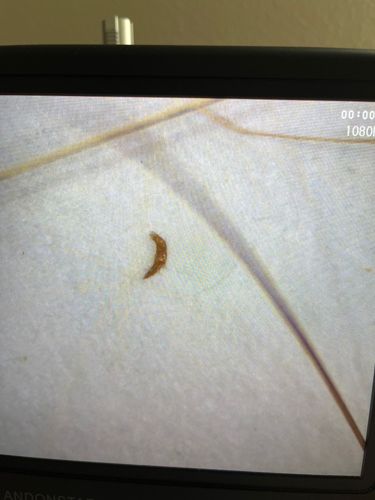Carpet Beetle Larva (possibly Varied Carpet Beetle or Black Carpet Beetle)
Scientific Name: Most likely Trogoderma variabile (Varied Carpet Beetle) or Attagenus unicolor (Black Carpet Beetle), based on general appearance.
Order & Family: Coleoptera, Dermestidae
Size: Larvae typically measure 2-5 mm (0.08-0.2 inches) in length.

Natural Habitat
Indoors, commonly found in homes, museums, warehouses, and other structures where animal products or stored foods are present. They prefer dark, undisturbed areas such as under carpets, in closets, pantries, and attics.
Diet & Feeding
Larvae are scavengers and consume a wide range of organic materials. Their diet includes animal products like wool, fur, feathers, silk, leather, museum specimens, taxidermy, dead insects, and pet hair. They also feed on plant-based materials such as stored grains, cereals, nuts, and dried pet food.
Behavior Patterns
Larvae are slow-moving and tend to avoid light, often found in hidden locations. They undergo several molts as they grow. The presence of their shed skins (exuviae), which are often spiny or hairy, is a common indicator of an infestation. Adult beetles, after emerging from pupation, may be attracted to light and found near windows.
Risks & Benefits
Potential risks include significant damage to natural fibers (carpets, clothing, upholstered furniture, blankets), stored food products, and museum collections. They do not bite humans or transmit diseases, but their shed skins or bristles can cause skin irritation or allergic reactions in sensitive individuals. There are no known benefits within a household setting; they are primarily considered pests that cause economic damage.
Identified on: 9/7/2025